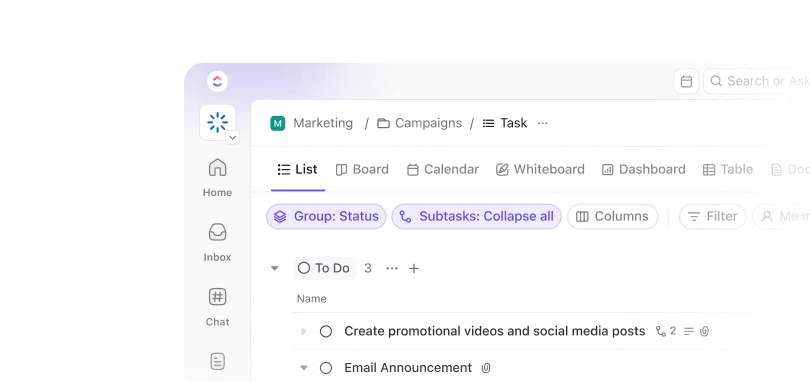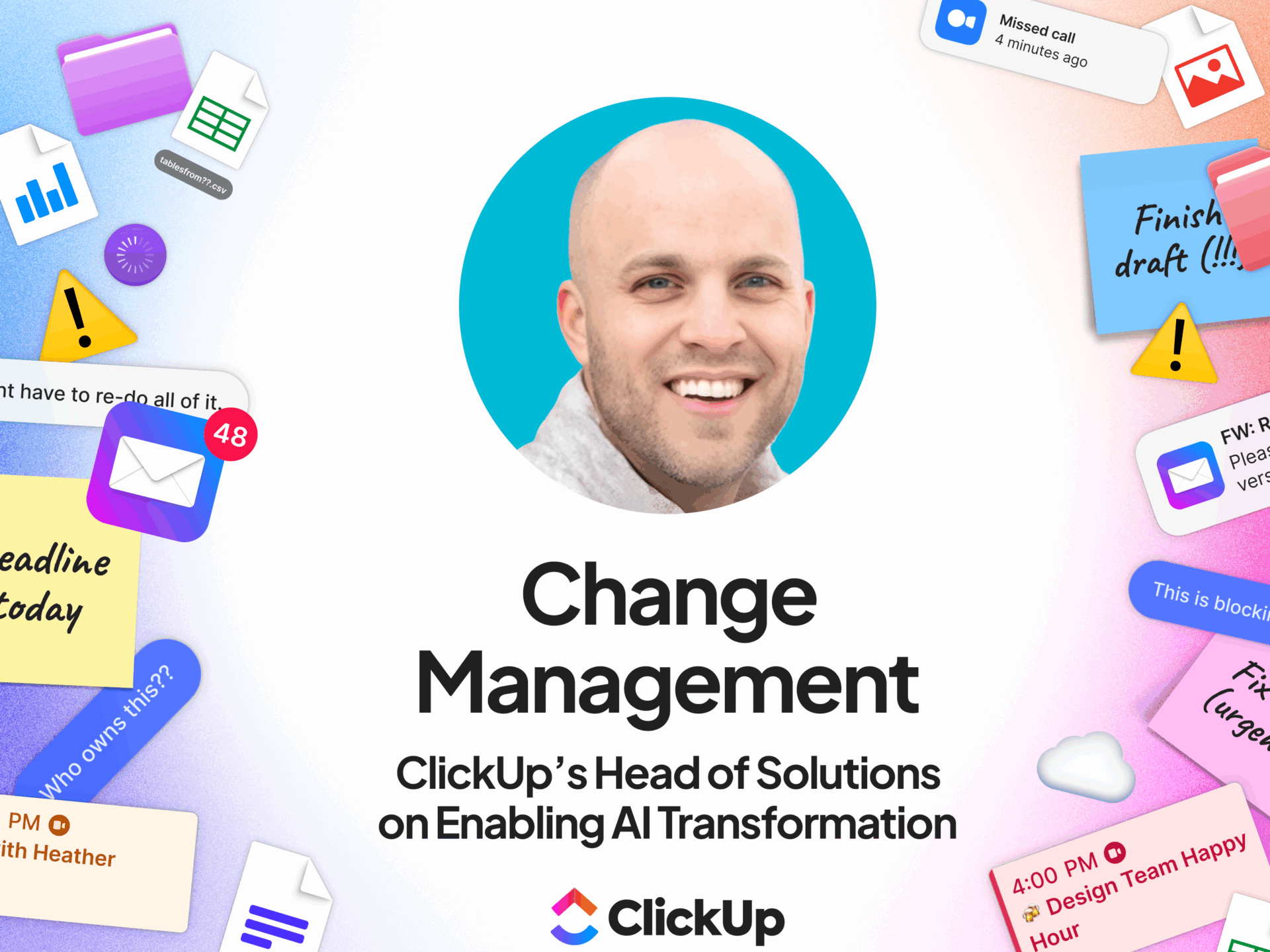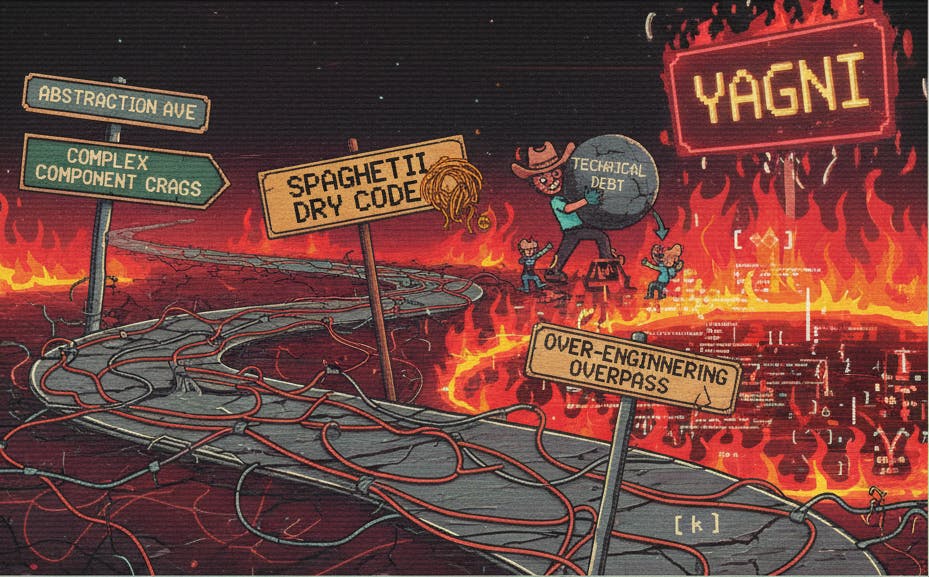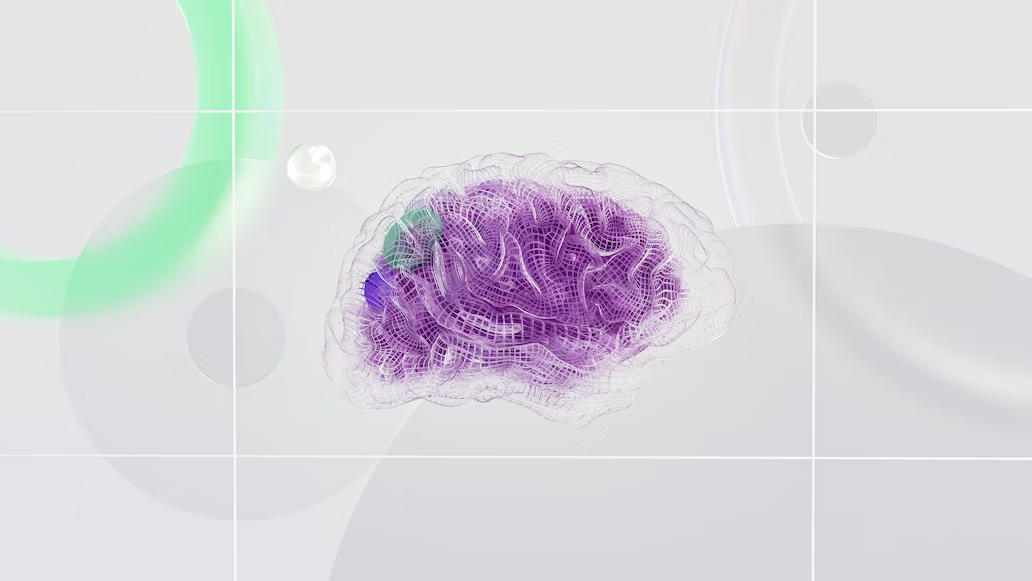Why Change Management Is the Deciding Factor, Now More Than Ever
If you’re leading a team or an organization today, you know the ground is shifting beneath your feet.
The pace of change in the workplace is relentless, especially when it comes to navigating AI transformation. I’ve spent my career helping organizations adapt, and I can say this with certainty: the real difference between teams that thrive and those that stall isn’t the toolset—it’s how effectively they manage change.
And the urgency to get it right has never been greater.
Without the right change management, investing in new technology is not going to give you the results you seek. Leaders need to think deeply about how work gets done, how teams collaborate, and how value is created from new tools.
The stakes are higher than ever, and the urgency to get AI change management right has never been greater.
Change Management in the Age of AI: Context, Convergence, and the Path to Real AI Transformation
Work Sprawl: The Hidden Cost of Fragmentation
Before joining , I managed business systems at a large healthcare company. We had every SaaS tool you could imagine, including accounting, HR, engineering, marketing, and investment platforms.
Each team had its own favorites, and none of them talked to each other. The result? Persistent bottlenecks, lost hours, and constant IT interruptions just to get a status update.
This is Work Sprawl: the proliferation of disconnected tools, fragmented workflows, and lost context—an obstacle to effective change management. To frame it as an IT problem misses the point. It’s a business problem, plain and simple.
When information is scattered and teams switch between systems, productivity declines, innovation stagnates, and engagement wanes.
It also extracts a heavy financial toll: $2.5 trillion lost in global productivity.
Even when companies try to fix it, rollouts often fall short.
When we tried to implement Jira for marketing at my old firm, the team dutifully attended the training, but then went right back to their whiteboards. Why? Because we hadn’t explained why the change mattered, how it would help them, or what support they’d get.
Adoption fails not because tools don’t work, but because people don’t see how the change connects to their daily work.
The Race to Convergence: Why Context Is Everything
Every day, new tools and technologies promise to make work easier, but most organizations just end up with more silos and more complexity. The real breakthrough comes when you converge your work, knowledge, and context in one place—a core principle of successful change management and AI transformation.
Because the truth is that AI, automation, and digital transformation are only as powerful as the context they can access. If you have to feed your AI tool manually every time, you’re still doing double work. The future belongs to organizations that unify context—where work, knowledge, and data live together, and intelligence can operate seamlessly within actual workflows. And this future is coming, whether you’re ready or not.
To understand the real impact of fragmented workflows, we recently surveyed knowledge workers about how they turn conversations into action items. The results reveal a critical gap: most teams still rely on manual or inconsistent methods to track next steps, and very few use dedicated project management tools. This lack of structure means important tasks often slip through the cracks, making it harder for teams to stay aligned and productive.

At , this is our north star. We were founded to make people more productive, and to do that, we’re going beyond building features to create a foundation where context is unified, workflows are connected, and teams can move faster with less friction. The organizations that act now—who break down silos and converge their work—will define the next decade.
But first, you need a way to understand where you stand today. That’s where the AI Transformation Matrix comes in.
The AI Transformation Matrix: Diagnosing Where You Stand
To help organizations see where they are and where they need to go, I use the AI Transformation Matrix—a practical tool for diagnosing your current state and charting a path forward.
Here’s a visual representation of the AI Transformation Matrix:


The four quadrants of the AI Transformation Matrix
- Low Context, Low Convergence: This is where most organizations begin. Tools are fragmented, data is scattered, and intelligence is limited to isolated pilots. Manual workarounds are the norm, and every new initiative feels like reinventing the wheel
- High Context, Low Convergence: Some teams possess rich data and deep expertise, but it remains locked in silos. Projects may show promise, but scaling is impossible because context doesn’t flow across the organization
- Low Context, High Convergence: Here, you’ve unified your tools, but the data and knowledge that power intelligence are still thin or outdated. Automation is possible, but the results are generic and lack impact because context is still missing
- High Context, High Convergence: This is the goal. Work, knowledge, and context are unified. Intelligence operates within live workflows, delivering tailored insights and automations that actually move the needle. Teams spend less time searching and more time creating value
So start by honestly answering the question: Where am I on this matrix? From my experience, most companies think they’re further along than they are.
The next question is: How do I move forward? That’s where change management becomes the bridge.
From Diagnosis to Action: Why Change Management Is the Bridge
Understanding your place on the matrix is only the beginning.
The real challenge—and opportunity—is moving toward the upper-right quadrant, a zone that is characterized by high context and high Convergence.
It bears repeating, technology alone won’t get you there. But people will.
The journey from fragmentation to Convergence, from isolated data to unified context, is fundamentally a people journey—and the backbone of any effective digital transformation strategy.
It requires changing mindsets, building new habits, and creating the conditions for sustainable change. The most advanced tools in the world won’t deliver results if your teams haven’t bought in and committed to the idea. You also need leaders who model the way, and flexible processes that support continuous improvement.
I’ll describe this with the four pillars of change management—the levers that move organizations from knowing what needs to change to actually making it happen.
The Four Pillars of Change Management, and How We Practice Them at
Here’s how the Four Pillars of Change Management show up in practice.


1. Executive sponsorship: the foundation
Change starts at the top. The best leaders don’t just approve the change; they dive right in. They use the platform, learn its quirks and value, then communicate the vision and ensure teams have what they need. Executive sponsorship is visible, vocal, and ongoing.
What this looks like at :
- Our CEO and COO regularly participate in AI initiatives, share their own workflows, and celebrate wins in company-wide channels
- Leadership “walks the walk” by using and AI tools in their own daily work, and sharing the results
- When executives model buy-in, it sets a standard for everyone else
Steps to drive executive sponsorship:
- Secure visible support from senior leadership
- Craft a clear messaging strategy for leaders to communicate the reasons for change and expected benefits
- Allocate the necessary time, budget, and personnel for a successful rollout
- Create enablement for leaders to use the new tools and share their experiences actively
2. Team buy-in: engage early and often
Change imposed from above rarely sticks. The best results come when teams feel ownership from the beginning. Involve team members early, invite them to test-drive the new change, and create feedback loops when they offer suggestions for improvement. Then, invite them to show how the change impacts their work in a meaningful way.
What this looks like at :
- We run company-wide AI contests where anyone, from any department, can submit their own AI-powered workflows
- Winning submissions are showcased in our main chat channels to inspire others and spread ideas
- Participation spans sales, finance, people ops, and marketing—not just product and engineering
Steps to drive team buy-in:
- Involve team members early in deployment and decision-making
- Create open channels for staff to share input, concerns, and suggestions
- Use feedback to refine workflows and demonstrate responsiveness
- Clearly explain how changes affect daily work and answer “what’s in it for me?”
- Recognize contributions publicly, even if not all suggestions are adopted
3. Identify your champions: bridge the gap
Champions are change agents in your organization who connect leadership and the broader organization. They’re widely respected, innovative, and deeply familiar with how work actually gets done. Champions don’t just evangelize—they build, troubleshoot, and inspire confidence in the change process.
What this looks like at :
- Champions lead from the front, rolling up their sleeves to help teammates adopt new tools
- My team and I host weekly workshops and webinars where champions and newcomers alike can learn, ask questions, and get hands-on support
- When teams hit roadblocks, champions and my team members step in to troubleshoot, co-create workflows, and share best practices
Steps to empower champions:
- Select respected, innovative champions with strong workflow knowledge
- Involve them as consultants, builders, and promoters of change
- Engage champions early in training sessions and keep them present during rollouts
- Empower champions to reinforce messaging, address concerns, and model adoption
- Ensure champions act as active ambassadors for change across the organization
4. Embrace incremental change: build momentum
Trying to change everything at once creates resistance. Momentum builds when teams can experiment safely, personalize their experience, and celebrate progress along the way.
What this looks like at :
- Each AI contest focuses on one workflow or business problem, with iterative improvements over time
- Teams are encouraged to personalize their experience, with clear boundaries for what can and can’t be changed
- Users create private views that fit their needs while still aligning with organizational standards
- Small wins are celebrated in company-wide channels, reinforcing progress as a continuous journey
Steps to embrace incremental change:
- Roll out changes in manageable phases to build momentum
- Allow teams to test new features and suggest improvements
- Set boundaries for flexible vs. fixed workflows
- Enable personalization with private views and safe experimentation
- Partner with champions to spread adoption and normalize change as a shared practice
The Manager’s Role: Translating Vision into Action
Great leaders lead by example, and managers are the linchpin of any transformation. At , managers are expected to communicate the “why” and “how,” facilitate feedback, and model the behaviors they expect from their team members.
What this looks like at :
- Managers are not bystanders. They participate in workshops, share their own workflow wins, and encourage their teams to submit contest entries
- They support champions, create safe spaces for experimentation, and use new tools themselves
Steps for managers:
- Clearly explain the purpose and process of change
- Facilitate open feedback and address concerns
- Use new tools and processes alongside their teams
- Support and collaborate with champions
The Role of the Customer Success Manager
When we’re helping our customers deploy , the process we encourage is the same. And here, our Customer Success Managers (CSM) are a key partner in the transformation.
What this looks like at :
- Our CSMs provide advisory services, help with planning, and share best practices
- They drive business results, facilitate executive reviews, and ensure teams have access to training and resources
- They help us track KPIs, run “train the trainer” programs, and connect us with new features and webinars
Steps to leverage your CSM:
- Use advisory services for governance and best practices
- Develop custom success plans and train internal trainers
- Use KPI engagement and reporting to track progress
- Take advantage of available resources, such as training and webinars
Planning for Success: What to Lean Into
Successful rollouts don’t happen by chance or on the back of good intentions. They need to be designed and strategized.
What this looks like at :
- We plan go-lives in phases, with clear milestones and communication
- We identify constraints early—such as resource limitations, technical challenges, or competing priorities—and address them head-on
- We define MVPs for each initiative, set measurable goals, and build cross-functional project teams
Steps to plan for success:
- Decide between a single go-live or a phased rollout based on organizational readiness
- Set realistic milestones and communicate them clearly
- Identify potential obstacles early
- Clarify what “minimum viable product” means for your transformation
- Establish measurable objectives for the new system or process
- Assemble a cross-functional team including a sponsor, champions, deployment leads, training support, and testers
Embedding intelligence into change
One of the biggest blockers to change isn’t outright resistance—it’s friction. People want to adopt new ways of working, but if it means more steps, more tools, or more overhead, they tend to fall back into old, comfortable habits.
This is where Brain and Brain Max change the game. Instead of asking teams to remember new processes, Brain embeds intelligence directly into daily workflows.
- Brain makes knowledge universally searchable across tasks, docs, and comments. Instead of “Where’s that update?” teams just ask Brain and get the answer instantly
- Brain MAX goes further—capturing updates through voice input, turning notes into action items, and even surfacing urgent work automatically


By lowering the cognitive load and making the right actions the easy ones, new habits naturally and sustainably take hold.
Lessons from the Front Lines


Change management is not a checklist; it’s ongoing work—listening, iterating, and celebrating wins. At , we’ve run AI contests, offered incentives, and broadcast successes in company-wide channels. But the biggest impact comes from building habits and showing teams how the tool solves their specific work problem. Nothing hits home quite like seeing your problem get unstuck in front of you.
One of my favorite moments was at a Secret Supper event in Mexico City. I demoed an automated workflow for scoring sales calls and generating campaign content. Watching people realize, “This actually solves my problem,” was a turning point.
Those “aha” moments are what drive real adoption.
The Urgency of Now
The accelerating push toward context convergence—blending workflows, context, and AI—means the window for competitive advantage is shrinking. Organizations that treat change management as strategy—not an afterthought—will outpace the rest.
If you’re starting your own transformation, don’t wait. Start small, celebrate wins, empower your champions, and never lose sight of the people at the heart of change. The organizations that move now—those that unify work context, reduce work sprawl, and drive AI transformation—will define the future of work.
Let’s build something better—together.


Everything you need to stay organized and get work done.










